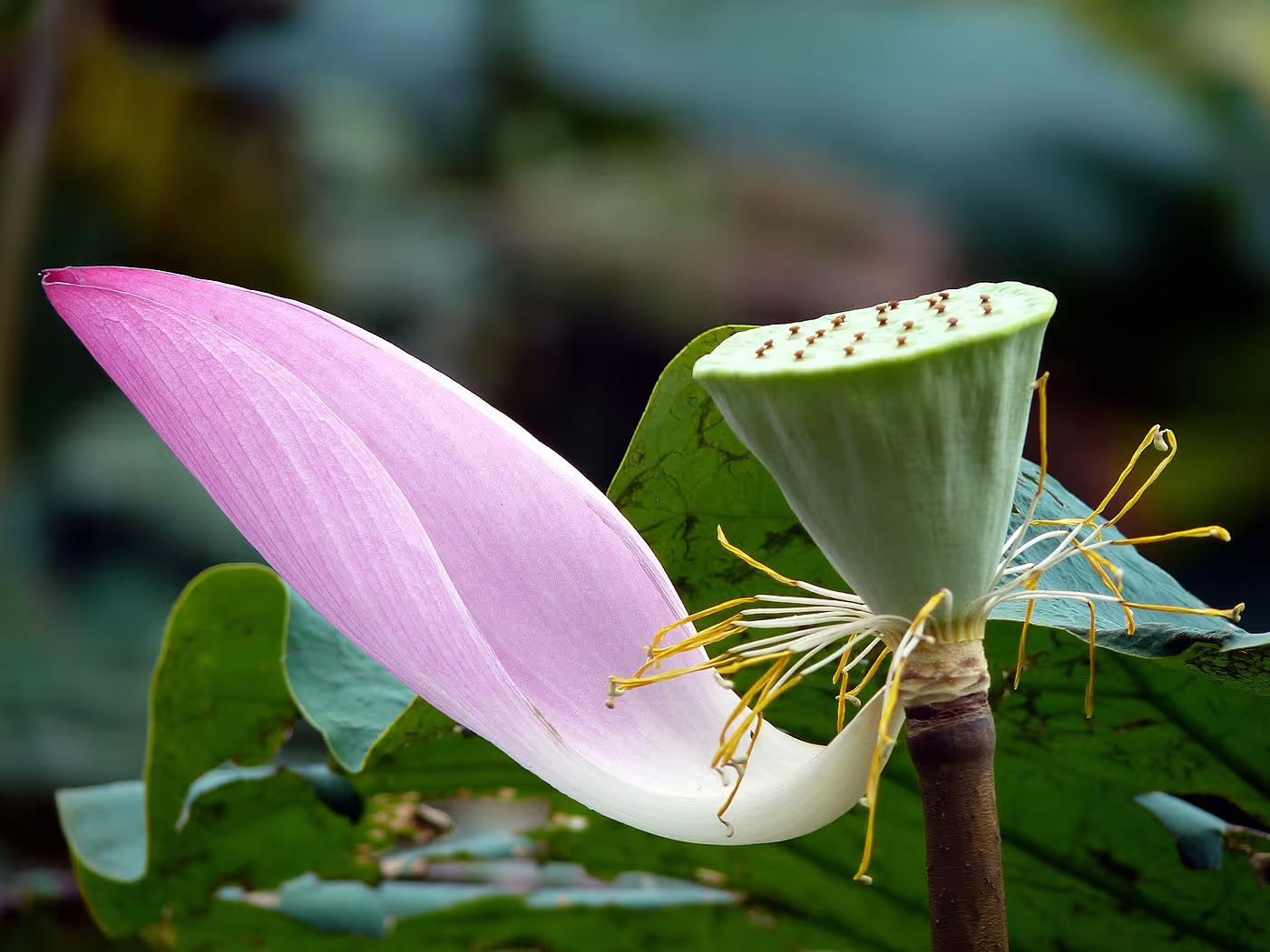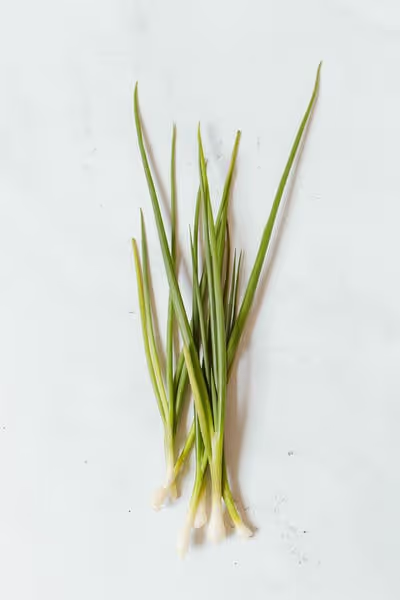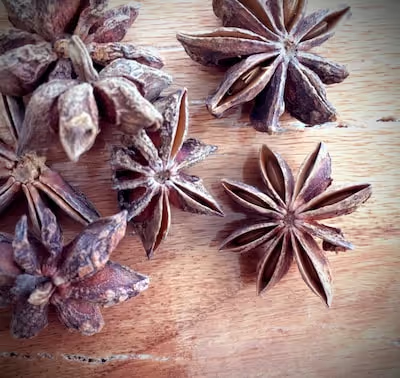Growing Lotus Root: A Simple Guide for Elegant Water Gardens

Growing Lotus Root
Growing lotus root at home starts by selecting a large, wide container to give your plant room to spread. Fill it with rich, muddy soil, submerge it in calm, shallow water, and position your lotus tuber horizontally just beneath the surface. With warmth, sunlight and patience, you'll soon harvest crisp, nutty lotus roots from your own aquatic garden—curious how? Keep reading for a straightforward guide to growing lotus root successfully.
Cheatsheet: Growing Lotus Root for Graceful Water Features
🌱 Lotus Root at a Glance
- Edible root, vitamin-rich, supports immunity
- Avg. yield: 10–15 lbs (4.5–7 kg) per plant
- Fastest growth: May–August
- Thrives in zones 4–10
- Peak water depth: 8–18 in (20–45 cm)
🧰 Tools and Products You'll Need
- Large tub, half barrel, or pond
- Heavy loam soil (not potting mix)
- Fertilizer (aquatic tablet type)
- Lotus tuber (choose firm, healthy pieces)
- Gloves
- Pruner
🌞 Planting Prep
- Start late spring, soil temps 70–85°F (21–29°C)
- Fill container with 6–8 in (15–20 cm) of loam
- Add 4–6 in (10–15 cm) water above soil
⚡ Step-by-Step: Grow Lotus Root
- Lay tuber horizontally on soil, growth tips exposed
- Gently anchor with soil, don't crush tips
- Submerge gently, add water if needed
- Place in full sun (at least 6 hrs daily)
- Feed monthly with aquatic fertilizer
- Top up water for steady depth
🚩 Harvest & Nutrition
- Harvest roots after 120–150 days (late summer/fall)
- Twist from soil, rinse; eat fresh or cooked
- Rich in vitamin C, B6, fiber, potassium
- Low-cal, dense, sweet crunch
💡 Care & Self-Sufficiency Tips
- Remove yellow leaves to deter pests
- Protect from frost with greenhouse or move indoors
- Divide tubers annually for ongoing supply
- Self-reliant water crop for edible gardening
-
Growing Lotus Root: the elegant basics
Growing Lotus Root starts with heat, sun, and patience. I learned that the hard way after my first rhizome melted in cold spring water.
Lotus, Nelumbo nucifera and Nelumbo lutea, want full sun and warm water. They reward you with plates of leaves and flowers that look like they were carved from moonlight.
Climate, sun, and water temperature
Wait until water holds steady at 70 to 75 F, 21 to 24 C, before planting. Lotus push fastest at 80 to 87 F, 27 to 31 C, in my ponds.
Large selections handle USDA Zones 5 to 10 if rhizomes never freeze solid. In colder zones, overwinter the pot below the ice line or move it indoors.
“Warmth moves lotus.” Old grower’s rule echoed by many in the International Waterlily and Water Gardening Society.
Containers and planting media
Use a wide, shallow tub, 15 to 25 in, 38 to 64 cm, and 10 to 20 gallons, 38 to 76 L. The rhizomes run sideways, so width matters more than depth.
Fill with heavy mineral loam or field soil. Never use fluffy potting mix, it floats and starves the plant.
Step-by-step planting that works
- Select a firm rhizome with an intact apical tip, the growing point. Soft or broken tips stall.
- Angle the rhizome 15 to 30 degrees, tip up. Bury lightly with 1 to 2 in, 2.5 to 5 cm, of soil.
- Top with pea gravel to anchor. Flood gently until 2 to 4 in, 5 to 10 cm, of water sits above the soil.
- Keep shallow at first for warmth. After strong leaves rise, deepen to 8 to 12 in, 20 to 30 cm.
I wait for the first aerial leaf before feeding. That cue lines up with active rhizome growth.
Feeding for flowers and fat rhizomes
Use aquatic fertilizer tablets, about 10-14-8 or similar. Push them deep into the soil near the pot rim.
Start with half strength, then feed monthly until late summer. Stop fertilizing 6 to 8 weeks before frost to let rhizomes harden.
Water depth and spacing
Dwarf lotus bloom well with 4 to 8 in, 10 to 20 cm, of water over the soil. Big varieties relish 12 to 24 in, 30 to 60 cm.
Give each plant a dedicated container. Unconfined lotus will colonize a pond like it owns the place.
Varieties I trust, from patio pots to estate ponds
- Momo Botan dwarf, compact, great for 10 to 15 gallon tubs. Cheerful double pink blooms.
- Chawan Basu dwarf to medium, elegant cup flowers. Reliable in short seasons.
- Mrs. Perry D. Slocum large, tri-color flowers over time. Wants heat and space.
- Nelumbo lutea American lotus, soft yellow, edible rhizomes. Sprawling growth habit.
Dwarfs suit patios. Large types suit lined ponds and cattle-tank gardens.
Edible types vs ornamental bloomers
Edible lotus lines are bred for thick, crisp rhizomes. Ornamental lines focus on flowers and plant stature.
Both need the same culture. For food, start with named edible stock from a clean source.
Harvesting lotus root without heartbreak
Harvest 4 to 6 months after planting, usually late summer into fall. Watch for yellowing leaves and firm, segmented rhizomes.
Tip the pot into a kiddie pool and rinse gently. Lotus root snaps easily and bleeds starch if rushed.
- Choose segments with 7 to 9 air canals for crisp texture. That interior lace tells you all you need.
- Store wrapped in a damp towel in the fridge for 1 to 2 weeks. Blanch and freeze for longer holding.
Kitchen notes from the pond edge
Sauté thin slices with ginger and scallion for snap. Braise thicker cuts with soy, star anise, and a hint of vinegar for silk.
Only eat lotus grown in clean, pesticide-free water. Avoid runoff sites and mystery soils.
Overwintering without losing the crown
In mild zones, sink the pot where water never freezes to the soil line. In cold zones, move the tub to a 40 to 50 F, 4 to 10 C, basement and keep the soil barely wet.
Cut spent foliage after frost. Leave a short stub above the rhizome to avoid rot tracking down hollow stems.
Pests, algae, and disease, handled fast
- Aphids: rinse with a hose or add a few small fish. In tough cases, use pond-safe insecticidal soap at dusk.
- Leaf spot: prune affected leaves and improve airflow. Avoid overhead splashing from fountains.
- Algae bloom: shade the water with full lotus leaf cover and avoid overfeeding. A fist-sized pinch of barley straw in spring helps.
- Rhizome rot: linked to cold, anoxic muck and overfeeding. Warm the water, refresh the soil, and feed less.
Water quality that lotus actually like
Target pH 6.5 to 7.5 and low turbidity. Keep water mostly still, with only a lazy ripple if you must run a pump.
Lotus leaves throw shade that clears water over time. Patience does more than any gadget here.
Buying guide, pricing, and gear
- Rhizomes: buy live, named cultivars from aquatic nurseries. Expect 20 to 60 USD, 18 to 55 EUR, per division in spring.
- Containers: plain, wide tubs without holes. 15 to 25 in, 38 to 64 cm, diameter fits most needs.
- Soil: screened topsoil or clay loam. Skip compost and peat, they float and foul water.
- Fertilizer: aquatic tablets, slow release. Plan on 3 to 5 feedings in a warm season.
- Pond liners: EPDM or rigid stock tanks work well. Black interiors warm faster.
Comparisons and smart alternatives
- Lotus vs hardy waterlily: lotus want more heat and space but give edible rhizomes. Waterlilies bloom earlier in cool water and fit smaller basins.
- Lotus vs taro, Colocasia: taro tolerates moving water and partial shade. Lotus demands still, hot water and full sun.
- Companions: soft rush, Juncus, and dwarf pickerelweed frame lotus without stealing the stage. Avoid aggressive floaters that shade new leaves.
Common mistakes and quick fixes
- Planting too early: wait for 70 F, 21 C, water. Cold equals rot.
- Too deep too soon: start shallow. Deep water slows spring growth.
- Overfeeding young plants: feed after the first aerial leaf. Early tablets burn tips.
- Soft potting mix: switch to heavy loam. Lotus need anchorage.
- Fountains blasting leaves: give them calm water. Save the spray for lilies elsewhere.
Numbers that shape my schedule
Lotus leaves in large cultivars soar 24 to 36 in, 60 to 90 cm, above water by midsummer. Rhizomes typically size up 1 to 2 in, 2.5 to 5 cm, in diameter by harvest.
Lotus seeds show extreme longevity, with ancient seeds germinated after centuries, reported by Science in the 1990s. That vigor hints at how tough the plant can be when given heat and sun.
“Plant when water holds at 70 F, 21 C. Feed after the first aerial leaf. Deepen water in heat.” My three-line lotus calendar.
Quick answers to frequent asks
- Can I start from grocery lotus root: rarely reliable. Use certified disease-free rhizomes.
- Do I need a filter: no, still water grows lotus best. Skim debris by hand.
- How many hours of sun: 6 to 8 minimum. More sun, more bloom.
- How soon to flowers: dwarfs in 8 to 10 weeks of real heat. Large types take longer.
Field notes and trusted references
International Waterlily and Water Gardening Society offers cultivation notes that align with the heat-first approach. Royal Horticultural Society guides echo the call for heavy loam and full sun.
University extension publications from Florida, Texas, and Illinois document container culture, fertilizer timing, and overwintering. Missouri Botanical Garden profiles both Nelumbo species for hardiness ranges and growth habit.
Frequently Asked Questions About Growing Lotus Root
What soil type supports healthy lotus root growth?
Lotus root thrives best in fertile, clay-rich soil with good moisture retention. Combining loamy garden soil with organic compost creates an ideal planting medium.
How deep should lotus root tubers be planted?
Plant lotus root tubers about 4–6 inches (10–15 cm) deep in soil, then place them in water approximately 12–18 inches (30–45 cm) deep above the surface of the soil to encourage steady growth.
What temperature range supports optimal lotus root development?
A warm environment helps lotus root thrive. Maintain daytime temperatures between 70–90°F (21–32°C). Lotus roots prefer warmer climates, so protect them from exposure to frost or cold drafts.
How frequently does lotus root require fertilizing?
Use a balanced aquatic fertilizer once every 3 to 4 weeks during the active growth period. Incorporating fertilizer tablets directly into the planting medium provides nutrients effectively.
What level of sunlight promotes vigorous lotus growth?
Lotus root plants enjoy full sunlight, requiring at least 6–8 hours daily. Positioning your plants in sunny areas fosters vibrant foliage and abundant flower production.
How long does it take until lotus root is ready for harvest?
Typically, lotus root matures and becomes harvest-ready in approximately 5–8 months. Harvest when leaves fade and turn yellowish-brown—usually in late summer or early autumn.
Should lotus root be grown in containers or ponds?
Lotus root grows successfully in both containers and ponds. Containers provide flexibility and better temperature control, whereas ponds offer spacious conditions for larger, established plants.
Are there common pests or diseases affecting lotus root?
Yes, lotus root can sometimes attract aphids, spider mites, or fungal issues such as leaf spot disease. Monitor plants regularly, manage pests early with safe insecticidal soaps, and maintain proper spacing to ensure good air circulation.
Growing lotus root rewards patience and attention, but the payoff is pure magic. With the right water depth, rich mud, and steady sun, these ancient plants transform a pond into something unforgettable. Keep your water clean, trim old leaves, and harvest with care. The crisp, earthy flavor of fresh lotus root is unbeatable—just ask any chef who’s sliced into one. If you’re drawn to aquatic edibles, you might enjoy exploring duck potato as a companion for your water garden. In the end, growing lotus root isn’t about perfection—it’s about creating a quiet, living beauty that feeds both body and soul.
The Homesteader’s Lotus Root: Nutrition, Sustainability & Self-Sufficiency
Boost Food Independence
Lotus root delivers continuous food supply from single plantings. Each established plant yields roughly 10-20 lbs (4.5-9 kg) edible roots annually.
Nutritional Powerhouse
- Fiber-rich: 4.9 grams fiber per 100-gram serving improves digestion and gut health.
- Vitamin C: Contains 44 mg per 100 grams, supporting immune health.
- Potassium: 556 mg per serving helps regulate blood pressure naturally.
Sustainable Animal Feed
Leaves and rhizome scraps effectively feed livestock—rich in protein and minerals, decreasing feed dependence.
Natural Water Purifier
Lotus plants absorb nitrates and pollutants, enhancing water clarity naturally in ponds, reducing filtration system needs.
Medicinal Benefits for Homestead Health
- Anti-inflammatory: Regular intake reduces inflammation naturally.
- Blood Sugar regulation: Traditional medicine utilizes lotus root tea to balance blood sugar levels.
Zero-Waste Opportunities
Dried lotus stems, pods, and foliage are valuable compost ingredients, enriching garden fertility organically.
Find out which plants will thrive in your garden!
Answer a few fun questions and get custom plant recommendations perfect for your space. Let’s grow something amazing together!

start your season





